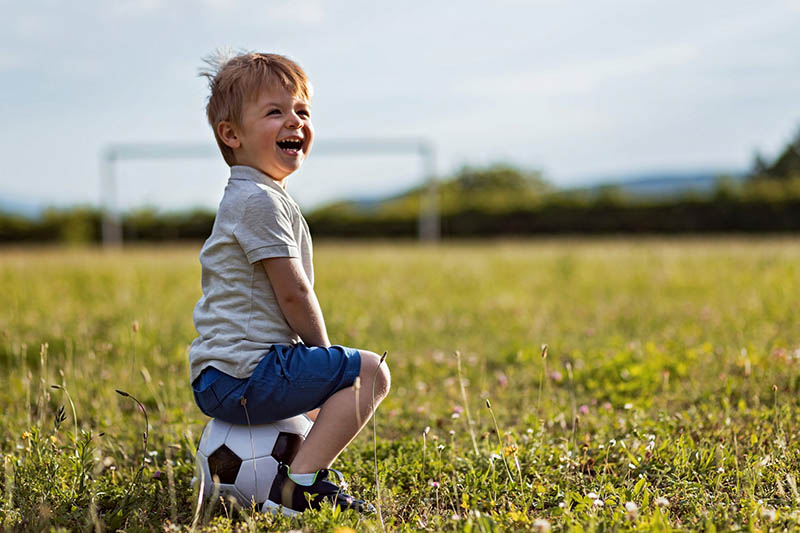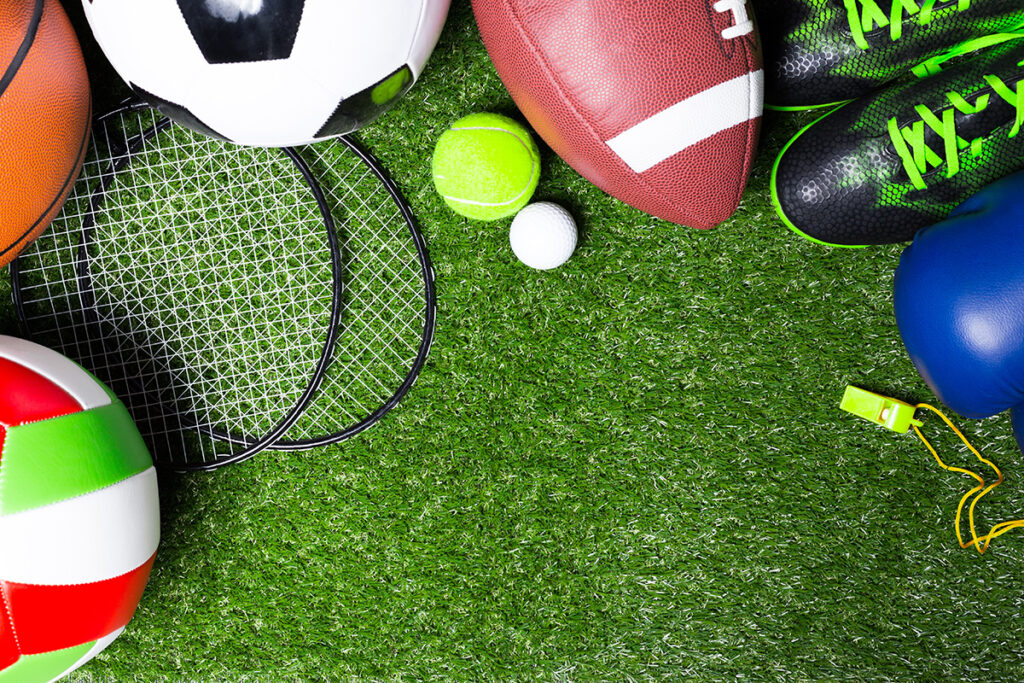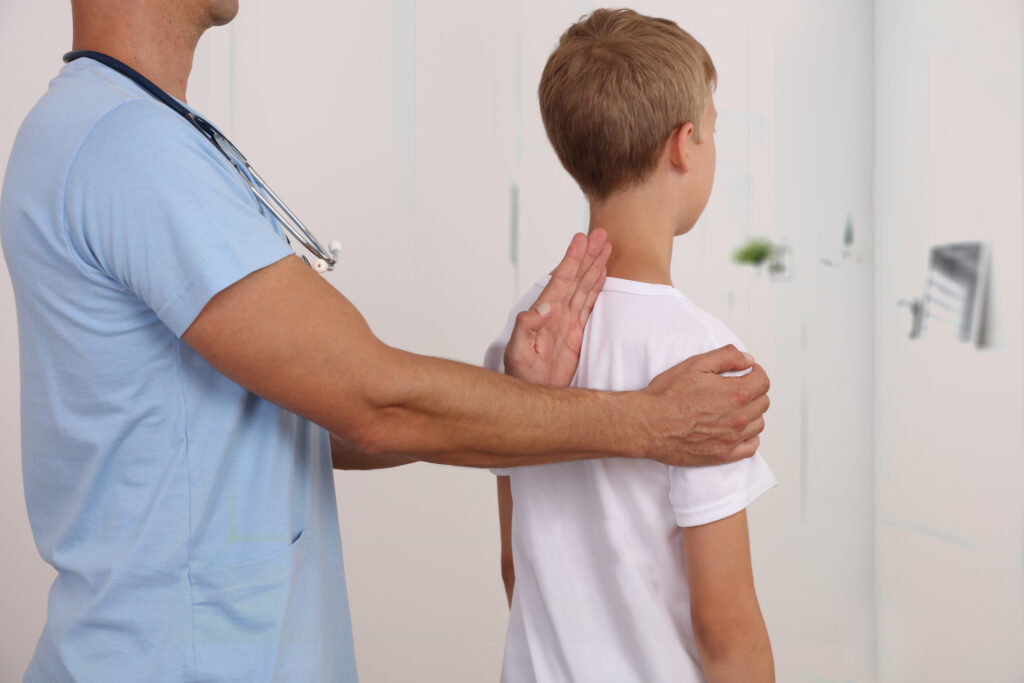Fall means back-to-school, which means back to sports like soccer, football, cross country and more for many children and young adults. Sports have tremendous benefits for children, from improved health and physical fitness to boosting self-esteem, camaraderie with friends and learning teamwork.
In all sports comes a risk of injury as well, which results in hand-wringing, nail biting anxiety for parents. Parents, athletes and coaches can’t stop all injuries; however, they can learn how to prevent many of them with a few easy steps and preparations focused on sports safety.
Types of Sports Injuries in Children
There are two types of injuries that can occur in young athletes: acute and overuse. Acute injuries occur during an isolated, traumatic event. These trauma injuries include fractures, sprains (injuries to ligaments), strains (injuries to muscles or tendons) and dislocations, among others.
Overuse injuries occur over time from repetitive motions in sports. These are typically more difficult to notice and diagnose and treat because they are not quick to develop and may be subtle.
Repetitive trauma primarily affects the joints, tendons and bones. These injuries include stress fractures and tendinitis in various areas, such as the shoulder. Also, the growing bones in children and young adults are make them more prone to overuse injuries.
How to Prevent Sports Injuries
Before your child starts playing, schedule a physical with their pediatrician. This step is always helpful in screening for and treating any conditions that may exist. They may also have some suggestions on how to reduce injury risk. They may indicate activities that your child should avoid if they have certain medical conditions and/or restrictions. Pass along any restrictions to your child’s coach.
- NEVER play through pain. Teach your child how to “listen” to their body and speak up to their coach and to you. Children may play through their pain because they don’t realize the seriousness of their injury and they don’t want to let their team or coach or you down. Playing through pain may cause a season-ending injury.
- Sleep! Extra exercise means extra sleep. The average child and teen may already struggle with getting enough sleep. It’s difficult when time is already stretched thin to schedule in extra sleep. Look at your and your children’s schedules and see how you can build in extra sleep time during sports season.
- Warm up before beginning practice or play. This will loosen muscles, get the blood flowing and ensure optimal range of motion in joints.
- Perform appropriate conditioning exercises. These exercises should be performed prior to practice to build strength and will likely be part of your child’s practice time.
- Wear the appropriate safety gear. Be sure your child understands that wearing safety gear alone will not prevent an injury; safe practices still need to be followed. This is especially important for injury prevention in contact sports such as football and lacrosse.
- Drink plenty of water. Always send water with your child, but also be sure there is an accessible water supply for your child to refill, especially during hot weather.
- Eat a healthy diet. Provide your child with healthy meals and snacks. They may need a higher calorie intake during sports season to replace the calories burned during practices and games. Talking with your pediatrician or a dietician can help you find the right foods to replenish depleted resources in your child’s growin body.
- Take breaks when needed. Talk to your child’s coach if you suspect that enough breaks are not being allowed. These rest periods are crucial to avoid heat-related injuries and give the body time to recover.
- Use proper technique. If your child is having trouble in certain areas of their sport—especially if they are new to the sport—ask the coaching staff if they can help. In a large group, it may be hard to notice if a child’s technique isn’t quite right. If available and feasible, private lessons may help.
- Play different positions or different sports. This helps minimize the risk of overuse injuries.
- Dress for the weather (when allowed). Though most sports have uniforms, be sure your child has appropriate clothing for practices in any type of weather.
- Take some time off. Be sure your child is getting enough rest for their body to recover. Plan on one day a week and one full month per year where they are not playing sports.
Signs of Injury to Watch for in Your Child
Your child may not realize they have an injury, especially if it’s not very painful or causing them problems while playing. Or, you may have a child with a “tough it out” mentality who is afraid they won’t be allowed to play if they tell you about their injury. Following are some signs your child may be suffering from a sports-related injury:
- Shortness of breath during play
- Sleeplessness
- Avoiding putting weight on a body part or favoring one side of the body
- Headaches during or after play
- Stiffness in joints or muscles
- Dizziness
- Lightheadedness
- Unusual weakness
- Blisters and irritated skin or rash
- Difficulty climbing stairs
- Difficulty sitting down
- Cannot feel their fingers or toes
When to Call the Doctor
If your child experiences any of the following, make an appointment with their pediatrician and stop sports activity until the issue is resolved. Acute injuries may require an emergency room visit. Overuse injuries often require rest and physical therapy.
- Pain that does not improve with rest
- Consistent pain during or after sports
- Swollen joint – new or persistent
- Recurrent instability – joints “give out”
- Painful popping sounds (nonpainful pops are fine)
- Sharp, stabbing pain during activity
Recognizing Sports-Related Emotional Stress
Physical injuries are not the only kind that needs prevention measures. Many athletes may experience emotional stress, be it self-inflicted, or put on them by a coach or parent. Putting pressure on a child to win or be the best may cause significant stress.
Unfortunately, this type of stress is common. Yes, losing a game isn’t fun, but it doesn’t have to cause your child emotional harm. Learning how to lose is an important lifelong skill.
The main goals of their participation should be having fun, gaining new skills and being physically active. Children and young adults should never be criticized or punished for making a mistake or losing a game. If you notice other parents or coaches participating in this type of behavior, try talking to them first, and contact the school if necessary.
Children should be rewarded for their effort, continual hard work and sportsmanship, regardless of the outcome of a game. Losing a competition is never worth inflicting emotional damage on a child. Talk to your child regularly to be sure they are not placing this type of stress on themselves.
If your child has experienced a sports-related injury, we can help. Contact The Pediatric Orthopedic Center for an appointment today with one of our local pediatric orthopedists. Our experts can evaluate your child’s injury and start a treatment plan that has him or her back on the playing field as quickly as possible.



